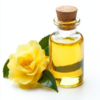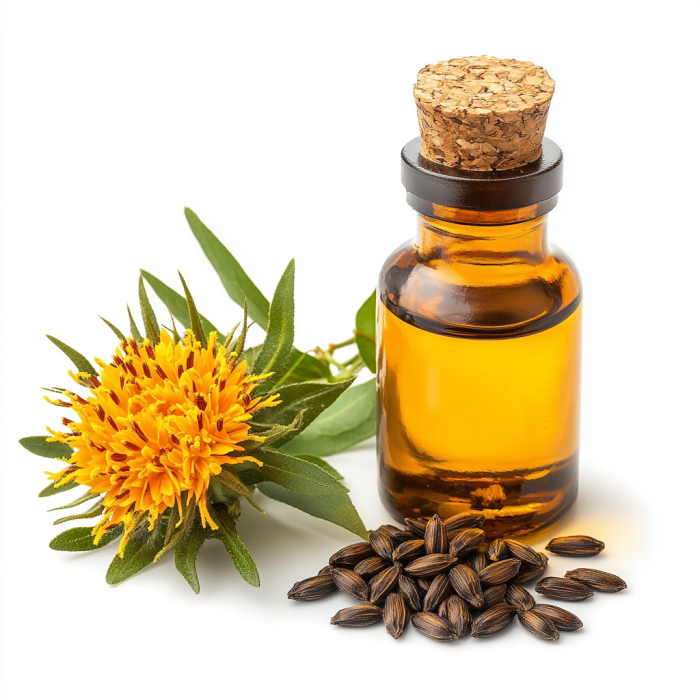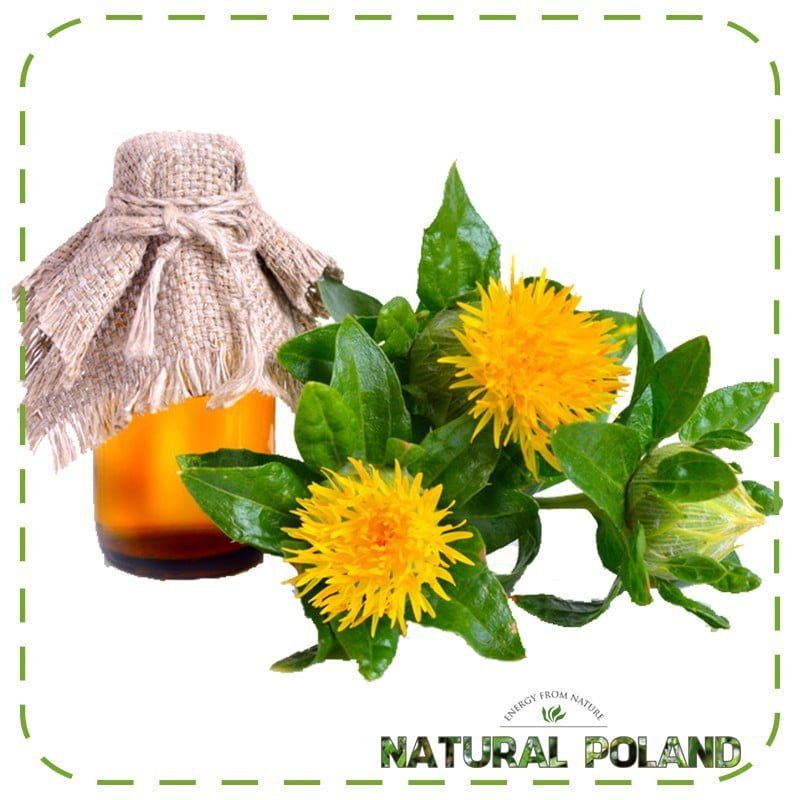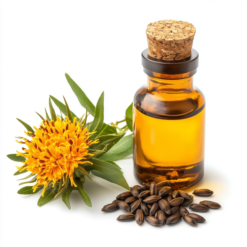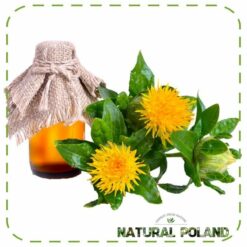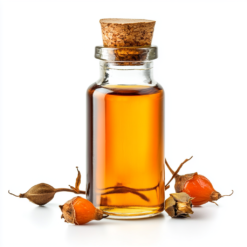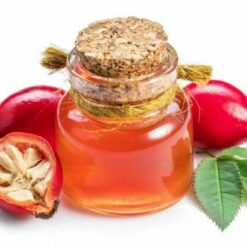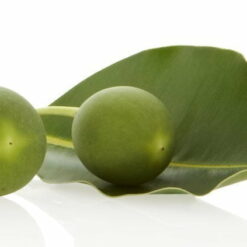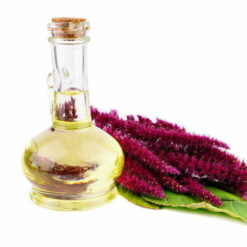Safflower oil is rich in polyunsaturated fatty acids (PUFAs), primarily linoleic acid (omega-6). It is also a natural source of vitamins A and E and phytosterols. The oil contains the following fatty acids (per 100g):
- saturated fatty acids (11 g)
- monounsaturated fatty acids (12 g)
- polyunsaturated fatty acids (77 g)
Health Benefits:
Safflower seed oil benefits the cardiovascular system, helps lower “bad” cholesterol (LDL), and regulates the body’s lipid metabolism. It reduces the risk of atherosclerosis, heart attack, and stroke. Its anti-aggregation properties prevent blood clots, while its blood pressure regulating action supports cardiovascular disease prevention. This oil is also beneficial for the immune system, strengthening the body’s natural protective barrier, and for the respiratory system, facilitating expectoration and reducing shortness of breath during infections.
Thanks to its linoleic acid content, safflower oil supports the hormonal system. It regulates prostaglandin production, which alleviates premenstrual tension (PMS) symptoms, reduces menstrual pain, and helps manage unwanted menopausal symptoms. It supports digestive processes, regulating bowel movements and preventing constipation, which is particularly helpful in weight management and Crohn’s disease therapy. Additionally, safflower oil lowers blood glucose levels, making it recommended for people with diabetes.
Oil Applications:
In cosmetics, safflower seed oil is valued for its anti-aging properties, which neutralize free radicals and protect the skin from harmful external factors. Regular use of the oil helps improve skin elasticity, reduce the appearance of wrinkles, and maintain proper skin hydration. Safflower oil soothes skin inflammation, accelerates wound healing, reduces symptoms of psoriasis and acne, and stimulates skin cell regeneration. In body care, it can be used directly on the skin or hair, as well as an ingredient in homemade cosmetics such as masks, creams, or lotions.
In cooking, it is an excellent addition to salads, raw vegetable dishes, dips, mayonnaise, or cottage cheese, enhancing the flavor of dishes with its delicate, slightly nutty note.



